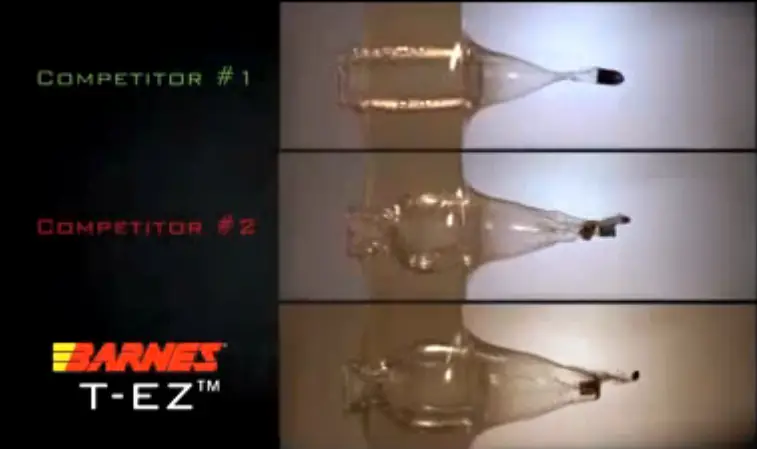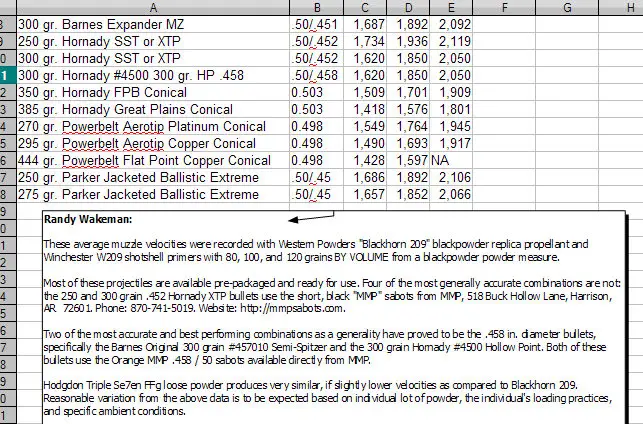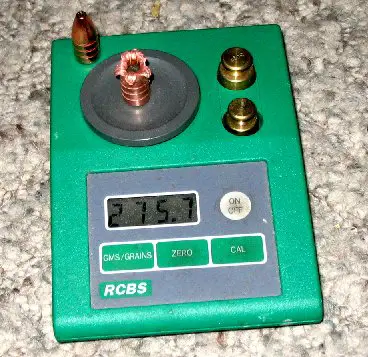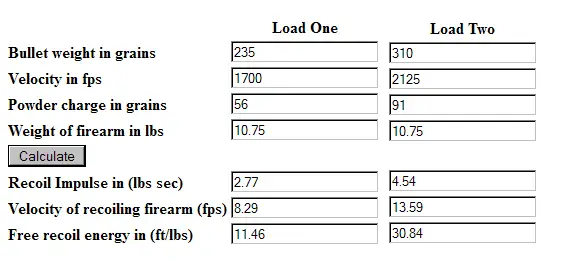


Muzzleloader Bullet Terminal Performance
While there is no substitute for shot placement and deer don't care how fast you miss them, there are quite easily observed differences in bullets used for as muzzleloading projectiles. Historically, one of the most effective bullets is the old .45-70 Government load as used in the Springfield Trapdoor. It was, and is a 405 grain lead bullet launched at 1305 fps. Heavy lead bullets, as championed by Doc White and others, have always been quickly lethal. However, the snowball from hell type trajectory makes shot placement difficult at longer ranges.
When Tony Knight brought muzzleloading into the modern era, working in conjunction with Del Ramsey of MMP and others, one of the considerations was using what was readily available to the hunter. To that end, the green .429 / 50 sabot was developed, to take advantage of .44 Remington Magnum pistol bullets that were plentiful and cheap. Though a thick sabot isn't usually as accurate as a thinner sabot, 100 grain blackpowder velocities were still moderate. As you can see, 100 grains of Hodgdon Pyrodex (or blackpowder) pushes a 300 grain saboted bullet at about 1600 fps muzzle velocity. Not a problem for a bullet like a 300 grain Hornady XTP, though a pistol bullet, a very good one. But, muzzleloading performance didn't stop there.

Above, 100 yard strike velocities into a three inch block of ballistic gelatin. Competitor #1, a Powerbelt, zips through with poor tissue simulant disruption. Competitor #2, cup and core SST, pops its core and fragments. The tougher Barnes shows 100% weight retention and, by far, the most impressive, highest volume wound track. What do you want to hunt with?
You can easily load high-quality muzzleloaders to 1850 fps with 100 grains
by volume of Blackhorn 209 or Triple Se7en. That has often generated strike
velocities that exceed the limitation of pistol bullets that were designed
for launch velocities of 1000 – 1300 fps. The varmint bullet effect
is generated, particularly when you hit bone. The bullet fragments, and
wounding losses are a consequence.

Performance-minded
muzzleloading enthusiasts drive bullets faster yet. 120 grain by volume
of Blackhorn 209 can push a 250 grain sabot to about 2150 fps muzzle velocity,
two Triple Se7en Magnum pellets net better than 2000 fps with a 300 grain
bullet. 120 grains by volume of Blackhorn 209 moves a 300 grain saboted
bullet at about 2050 fps. One grain by weight of
Blackhorn 209 nets about a 15 fps increase.
Alright, now consider the Remington Model 700 Ultimate. 84 grains by weight
of Blackhorn 209 equates to 120 grains by volume. 130 grains by volume
is 91 grains by weight. That extra 7 grains by weight of Blackhorn 209
gets you about 105 fps, or 2155 fps, my favorite load. You can go hotter,
of course, but I've not used more than 100 grains by actual weight (about
143 gr. volume) of Blackhorn and a Parker 300 grain Match Hunter. And,
I'm not going to: that load has sufficient recoil and sufficient noise
to please most folks, believe me. For those that feel too much is barely
enough, 150 grains by volume of Blackhorn 209 weighs 108.1 grains.
For many standard quality muzzleloaders (LHR Redemption and T/C Encore), 110 grains by volume of Blackhorn 209 has proved to be the accuracy / velocity limit. In the case of the Remington 700 Ultimate, MOA is still there all the way to 143 grains by volume. My shoulder isn't, so 130 - 135 grains by volume is what I consider shootable, but still an extremely effective long range load.

For the tougher bullets (XPB 275 Barnes as shown above, including the Parker 300 gr. Match Hunter) 1400 fps strike velocity is plenty to ensure bullet deformation / expansion. In the case of the XPB 275 Barnes, 1400 fps is the requisite velocity for expansion (45 degree petal opening). The Barnes Original .458 SS-SP (.032 in. jacket) needs 1600 fps strike velocity. The Barnes Spitfire T-EZ 250 and T-EZ 290's expand at 1200 fps or so strike velocity. The standard tube-type MZ-Expanders have a huge hollow point, and open at even lower velocities: ideal for 80 - 90 grain blackpowder or Pyrodex charges.

Perhaps the best extremely low recoil load is the Barnes XPB 225 "45 Colt" 225 grain bullet, #45120, with the short black MMP sabot, pushed by 80 grains by volume of Blackhorn 209, shown as "Load One" above. That's about a 1700 fps load that will instantly flatten any whitetail to 153 yards with no holdover, sighted in 2.5 inches high at 100 yards (131 yard zero). It is like shooting a pillow.
For those that want expansion (deformation) with tougher bullets, note that a 2125 fps 300 grain Parker Match Hunter (.028 in jacket) load exceeds 1400 fps strike velocity to 365 yards. Recoil is "Load Two," above. Also note that "expansion" (actually deformation) is from soft tissue simulants, not bone. If breaking bones and driving through shoulders is a possibility, a tough bullet is invariably the better choice.
Note: an expanded look at recoil by cartridge is at: http://www.randywakeman.com/FullRecoilComparison.htm.
Copyright 2014 by Randy Wakeman. All Rights Reserved.



